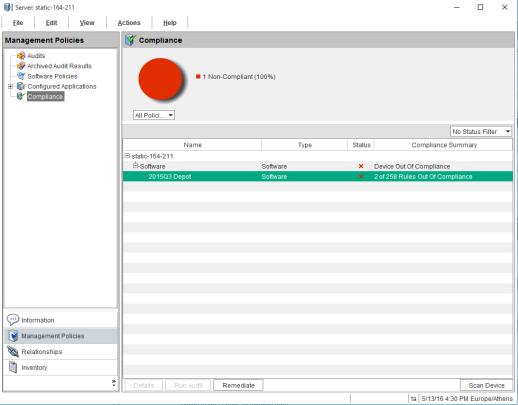Searching the Help
To search for information in the Help, type a word or phrase in the Search box. When you enter a group of words, OR is inferred. You can use Boolean operators to refine your search.
Results returned are case insensitive. However, results ranking takes case into account and assigns higher scores to case matches. Therefore, a search for "cats" followed by a search for "Cats" would return the same number of Help topics, but the order in which the topics are listed would be different.
| Search for | Example | Results |
|---|---|---|
| A single word | cat
|
Topics that contain the word "cat". You will also find its grammatical variations, such as "cats". |
|
A phrase. You can specify that the search results contain a specific phrase. |
"cat food" (quotation marks) |
Topics that contain the literal phrase "cat food" and all its grammatical variations. Without the quotation marks, the query is equivalent to specifying an OR operator, which finds topics with one of the individual words instead of the phrase. |
| Search for | Operator | Example |
|---|---|---|
|
Two or more words in the same topic |
|
|
| Either word in a topic |
|
|
| Topics that do not contain a specific word or phrase |
|
|
| Topics that contain one string and do not contain another | ^ (caret) |
cat ^ mouse
|
| A combination of search types | ( ) parentheses |
|
Patch compliance
An HP-UX patch compliance scan compares the patches that are installed on a managed server with the patch policies that are attached to the server. If the actual server configuration does not match the patch policies attached to the server, the server is out of compliance with the patch policies. In addition, if a patch in the patch policy has been superseded by a newer patch and the newer patch is installed on a server, that server will be marked as compliant.
In the SA Client, when you perform a patch compliance scan, the scan indicates the server's overall compliance with all HP-UX patch policies that are attached to the server. Even if only one HP-UX patch policy attached to the server is not compliant, the server is considered non-compliant. You can then view the non-compliant server and remediate the server against the applicable patch policy.
The SA Client displays the following compliance information for a patch policy:
|
Status |
Description |
|
|---|---|---|
|
|
Compliant |
All patch policies attached to a server are compliant—all patches specified in all patch policies are installed on the server. |
|
|
Non-compliant |
At least one of the patch policies attached to the server is not compliant—at least one patch in the policy is not installed on the server. |
|
|
Scan Started |
The patch compliance information is currently being collected. |
|
|
Scan Failed |
The patch compliance scan was unable to run. |
|
|
Scan Needed |
The patch compliance information needs to be collected or the compliance information may be inaccurate. |
|
— |
Not Applicable |
The patch compliance information does not apply. |
See the following figure for an example of patch compliance status for the Standard HP-UX bundle.

In this example, Server Automation reports that the compliance status for the Standard HP-UX QPK bundle is “2 of 258 rules out of compliance.” The total number of patches within QPK bundle is 259. SA determined that one patch in this bundle is not applicable to this managed server. Therefore, it reports compliance status only for 258 patches instead of 259 patches.
SA also determined that two patches have superseded patches and that these superseded patches are installed on the server but not uploaded in the repository. Therefore, they are reported as out of compliance.
We welcome your comments!
To open the configured email client on this computer, open an email window.
Otherwise, copy the information below to a web mail client, and send this email to hpe_sa_docs@hpe.com.
Help Topic ID:
Product:
Topic Title:
Feedback:









